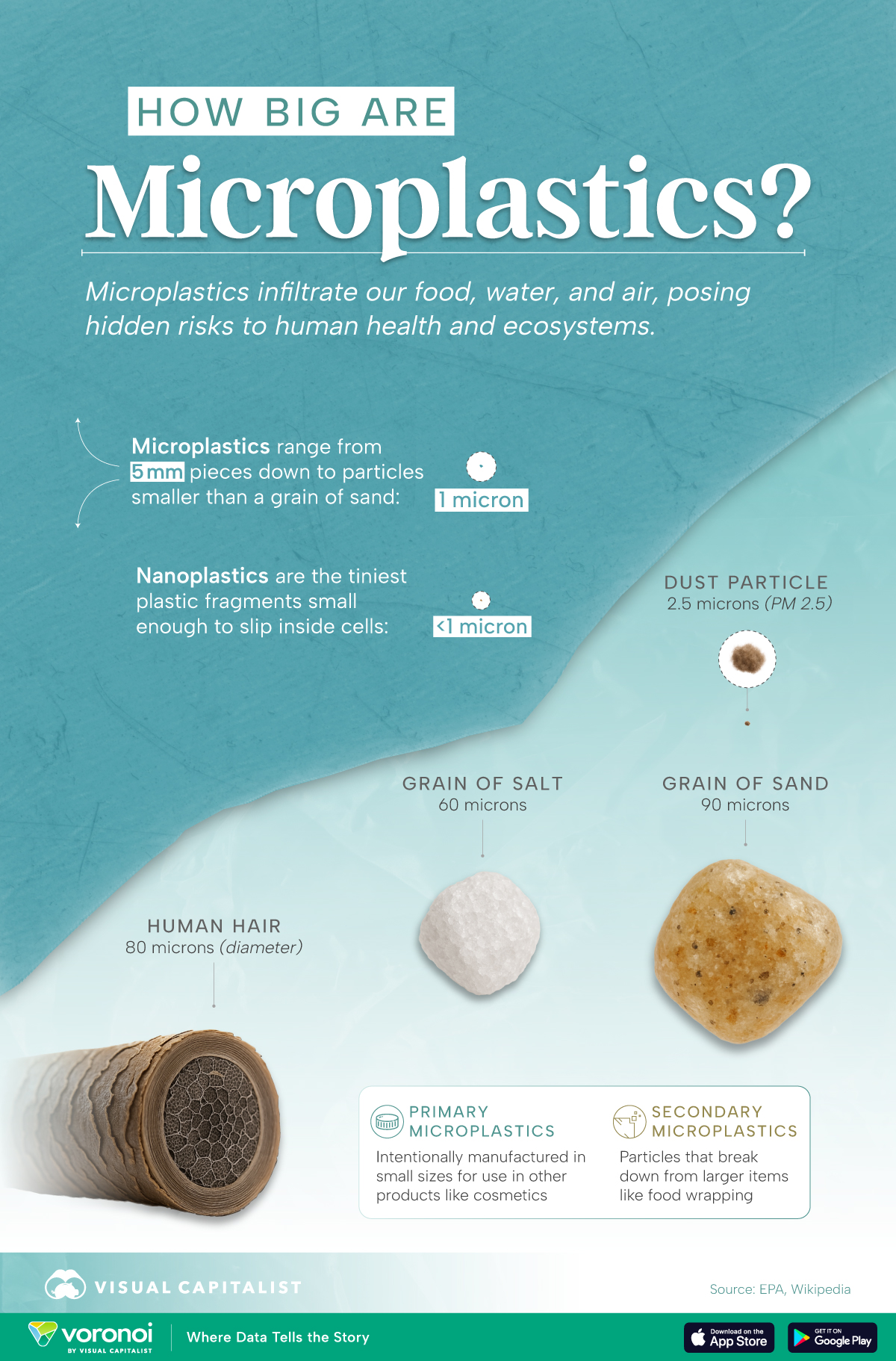How Small Are Microplastics? We Put Things Into Perspective
September 21, 2025
By Marcus Lu
Graphics/Design:
See this visualization first on the Voronoi app.

Use This Visualization
How Small Are Microplastics? We Put Things Into PerspectiveThis was originally posted on our Voronoi app. Download the app for free on iOS or Android and discover incredible data-driven charts from a variety of trusted sources.
Key Takeaways- Microplastics are tiny plastic particles, usually less than 5mm in size, that result from the breakdown of larger plastics or are manufactured for specific uses.
- Nanoplastics, typically smaller than 1 micrometer, are formed from the further breakdown of microplastics and can slip inside cells by crossing cell membranes.
Microplastics are often described as being “invisible to the naked eye,” but how small are they really?
To put their scale into perspective, this infographic compares them with familiar objects like grains of sand or a strand of human hair. The comparison makes it clear just how tiny microplastics are, and why they pose a risk to our health.
Data & Discussion
The data for this visualization comes from various sources including the Environmental Protection Agency (EPA). It highlights the size range of microplastics compared with common natural and household particles.
ObjectSize (microns)|
| ?? Microplastics (upper range) | 5,000 | | ?? Human hair (diameter) | 80 | | ??? Grain of sand | 90 | | ?? Grain of salt | 60 | | ??? Dust particle (PM 2.5) | 2.5 | | ?? Microplastics (lower range) | 1 | | ?? Nanoplastics | <1 |
A micron is also known as a micrometer, equal to one-millionth of a meter.
Putting Microplastics Into Context
At their largest, microplastics measure up to 5,000 microns (5 millimeters). This is still tiny, but visible to the human eye. At the lower end of the scale, they can shrink to just 1 micron, far below what most people can see with their own eyes.
For comparison, the diameter of a human hair averages about 80 microns, and a grain of salt measures around 60 microns. That means the smallest microplastics are dozens of times smaller than a single salt grain.
When Microplastics Become Nanoplastics
As plastics break down, they can further degrade into nanoplastics—particles smaller than 1 micron. For context, a coronavirus particle is between 0.1 to 0.5 microns.
Because of their microscopic size, nanoplastics can even penetrate biological barriers. Studies suggest they are capable of crossing cell membranes, raising concerns about their effects on human health and the environment.
Are Microplastics Bad For Human Health?
According to a recent study titled Impact of Microplastics on Human Health: Risks, Diseases, and Affected Body Systems, microplastics are ubiquitous throughout our food chain, water supply, and air.
They can enter our bodies through ingestion, inhalation, and even transdermal absorption (passing through the skin).
Exposure to microplastics is associated with a long list of outcomes, including inflammation, immune dysfunction, and potential damage to respiratory, gastrointestinal, cardiovascular, neurological, and reproductive systems. |





